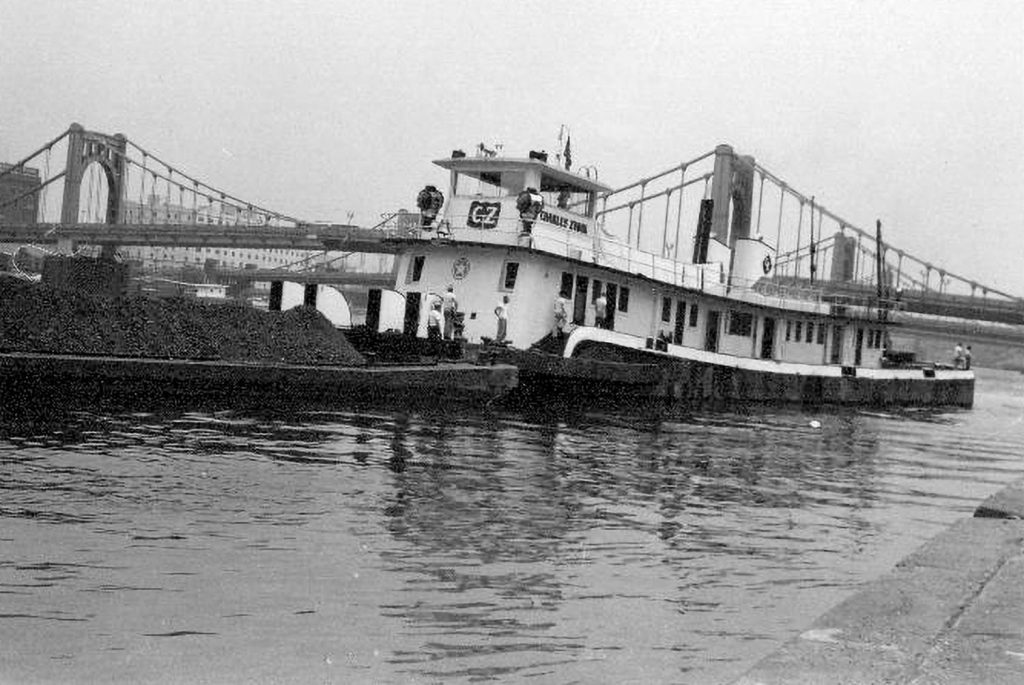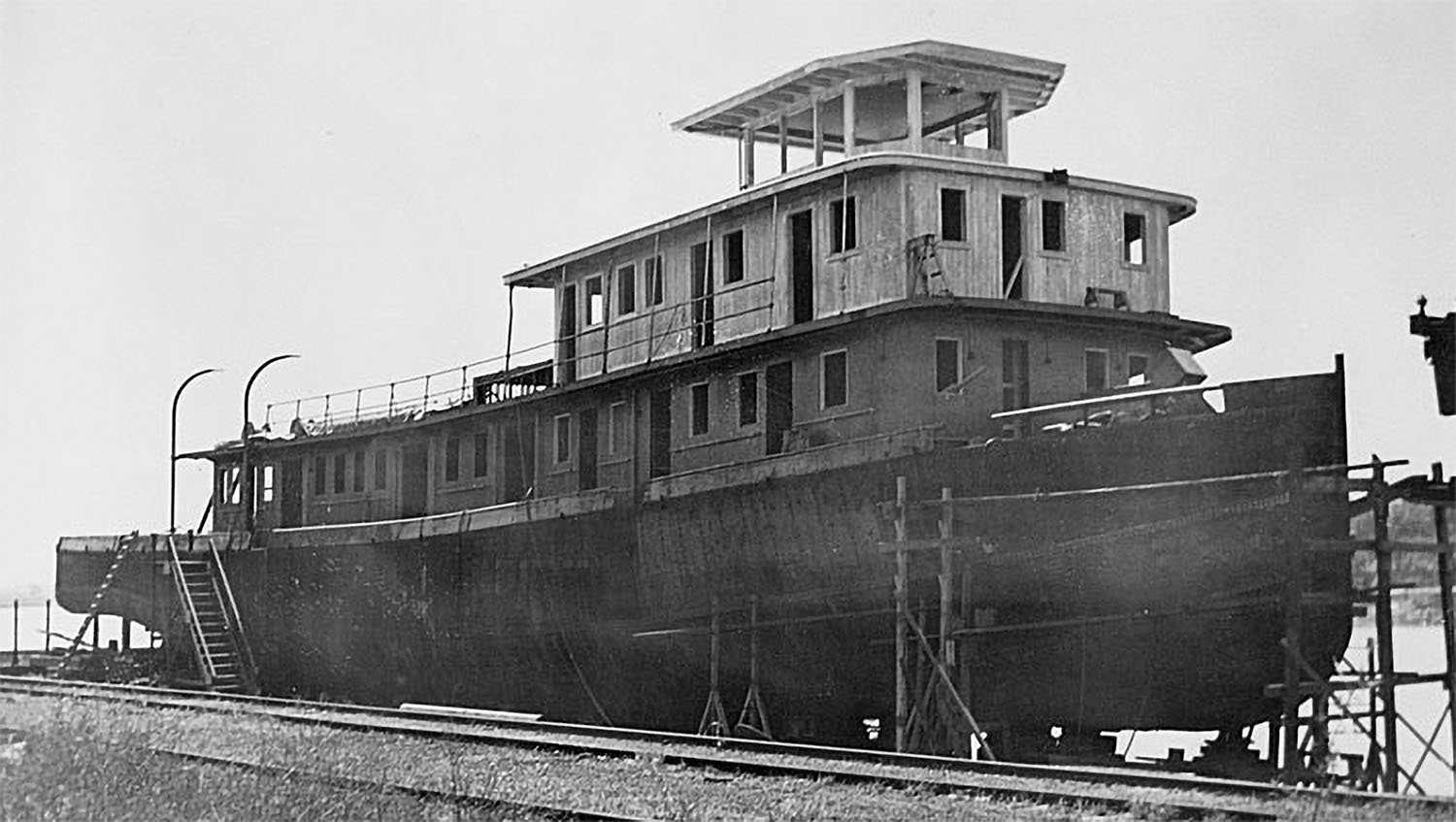In 1938, the Inland Waterways Corporation (IWC), the government-owned barge line known among river interests as the Federal Barge Line, contracted with the Dubuque Boat & Boiler Company for a twin-screw hawser-type tug.
This tug had a steel hull measuring 145 by 35 feet, and the steam machinery installed came from the recently dismantled freight barge Gulfport that had been built at St. Louis in 1921. The triple expansion condensing engines were 10-1/4’s, 17’s, 27’s – 18 inch stroke, rated collectively at 1,000 hp. The water tube boilers were fired by oil, and the propellers were 6 feet, 5 inches in diameter.
Since the new tug was to be utilized between Mobile, Ala., and New Orleans, the name Mobile was selected for it. According to Way’s Steam Towboat Directory, the Mobile was christened at Mobile on November 30, 1938, and the vessel sponsor was Mrs. William Bankhead, wife of the U.S. Speaker of the House. In 1948, the IWC sold the Mobile at a public sale to Zubik Towing Company, Pittsburgh.
Zubik removed the steam machinery and repowered the tug with a pair of GM diesels totaling 1,800 hp. Also as part of this rebuild, the original wooden upper cabin and pilothouse were removed, as well as the single tall smokestack. A large, elevated pilothouse was placed atop the main cabin, and twin stacks were added over the engine space. To complete the conversion to a river towboat, the sharply modeled bow was reconfigured to accommodate a traditional bow deck with towing knees. The boat re-entered service in 1950 with the name Charles Zubik.
This was the second boat to carry the name, the first being a steam, sternwheel towboat that had been built at Point Pleasant, W.Va., in 1925 as the Pennova for the U.S. Engineers. It was sold to Zubik in 1939 and renamed. It was again sold in 1941 to McCrady-Rogers Company, Pittsburgh, and renamed Mac-Rod.
In the Pittsburgh area, the diesel Charles Zubik was referred to as “the big Charles” to separate it from the smaller diesel sternwheeler Charles Z Jr.

For some reason, in 1956 the Inland River Record began listing the build date of the boat as 1921. Research shows that it was definitely built at Dubuque in 1938 as the Mobile. However, the freight barge Mobile, also owned by IWC, was built in 1921. This may have led to the confusion, but at any rate the build date was listed in error from that point on.
As mentioned in this column last week, the Charles Zubik was shown in an episode of the Route 66 TV program in 1961, and it can also be seen in the background of some photos of the steamboat races held in Pittsburgh in 1951. After 1970, the Charles Zubik disappeared from the listings of the IRR, reappearing in the 1974 edition as the Capt. J.W. Banta. The listing indicated that the boat had been sold to Banta Towing Inc., Plaquemine, La., in 1972 and renamed.
The Capt. J.W. Banta remained in the Banta fleet and was last listed in the 1979 edition of the IRR. In the 1980 edition it appeared in the “Off The Record” section of the book as “out of service.” It would be seen for years after, laying in the fleet at Plaquemine Point and then beached out there and cut up piece by piece over a period of several years.
Caption for top photo: Tug Mobile under construction at Dubuque in 1938. (Dan Owen Boat Photo Museum collection)




